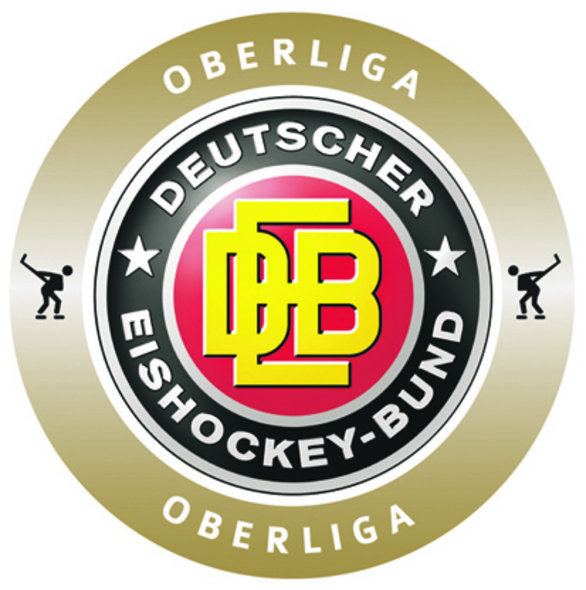Sport Ice hockey Official website Official ESBG website Date founded 1948 | No. of teams 39 Most recentchampion(s) Kassel Huskies Number of teams 39 | |
 | ||
Relatedcompetitions Instances 2013-14 Oberliga, 2011-12 Oberliga, 2010-11 Oberliga | ||
The Oberliga (English:Upper League) is currently the third tier of ice hockey in Germany. For the 2014-15 season, the Oberliga is split into four different divisions.
Contents
1948-58
The ice hockey Oberliga is the oldest continuously operating league in this sport in Germany. The league was formed in 1948, then as the highest level of play in the country. It started out with six teams who played a home-and-away season to determine the German champion. The founding members were:
The league expanded to eight clubs for the second season and twelve in the third. From 1952 onwards the league operated with eight clubs again. The 1957–58 season was the last one for the league as the highest level of play in the country. It was decided to form the Eishockey Bundesliga. The best eight clubs from the Oberliga, which then operated with twelve clubs again, qualified for the new top division.
1958-73
The Oberliga remained in existence however, now as the second tier of German ice hockey. Starting out with eight clubs in the league again, it expanded to twelve in the coming seasons. The year 1966 saw the league split into a northern and a southern group. The two separate leagues were called Oberliga South and Oberliga North. The winners of the two divisions would determine the Oberliga champion in a home-and-away series.
The league reunited in a single division in 1970, now with a strength of 16 teams and direct promotion to the Bundesliga.
The 1972-73 season was the last one as a tier-two league. With the foundation of the 2nd Bundesliga, the Oberliga fell to tier three. While the league champion moved up to the Bundesliga and the teams placed two to nine gained entry to the new second division, only the bottom seven clubs remained in the league.
1973-94
The Oberliga was now again divided into a northern and a southern group. The top two teams out of the two divisions originally played out a promotion round to the 2nd Bundesliga which also served to determine the Oberliga champion. While the modus and number of teams in the league continued to fluctuat, the overall situation remained the same.
1994-99
The year 1994 saw major changes in the German league system. The Bundesliga and 2nd Bundesliga merged to form the new DEL, an independently run league consisting of 18 clubs in its foundation years. Those second division clubs that did not elect to join the DEL were integrated into the new 1st Liga, which had replaced the Oberliga and operated in a northern and a southern group. The best teams of each of the two divisions played out a DEB championship, similar to the old Oberliga championship.
The 1998-99 season was very much a transition season. The DEB had reintroduced a single-division, nationwide league, titled Bundesliga to compete with the DEL. The league below was now the 1st Liga, which was made up of those clubs from the 1st Liga not adCentred to the new Bundesliga and 2nd Liga clubs. However, this situation existed for only one season.
1999-present
From 1999, the league returned to its traditional name Oberliga, with two regional groups, north and south. In turn, the league above it took the name 2nd Bundesliga. The DEL renamed itself DEL - Bundesliga.
Due to a lack of interest, the Oberliga North dissolved after the 2000-01 season. The three clubs from this region which were still interested in playing on Oberliga level joined the southern division.
The Oberliga South, largely made up of Bavarian clubs, continued to operate successfully in the coming season, usually including a couple of northern clubs, while the Oberliga North was not reestablished until 2007.
The ESBG, now operating the 2nd Bundesliga and Oberliga for the DEB decided to reform an Oberliga North in 2007. The two separate divisions of the league were however not completely independent of each other, like in the past. Teams from the same league would meet each other four times now, while clubs from different divisions would only meet twice in the regular season. At the end of this, a combined play-off round would determine the Oberliga champion.
In 2007-08, the Oberliga was split in a northern and a southern group for the first time since 2001. The northern group contains nine, the southern ten clubs. The four best-placed teams from each group enter a best-of-five play-off round to determine the Oberliga champion and the two promoted teams to the 2nd Bundesliga. The bottom four in each group enter a play-down round to determine the relegated teams.
In the 2008-09 season, the league played in a single division format before switching to four regional divisions with an Oberliga championship at the end from 2010 onwards.
In Summer 2010 the organisation of the Oberliga goes away from the ESBG and the Mode was changed:
